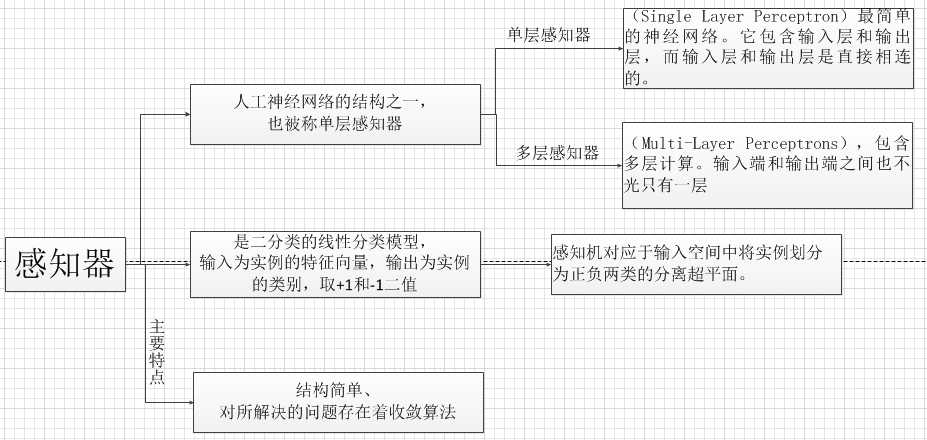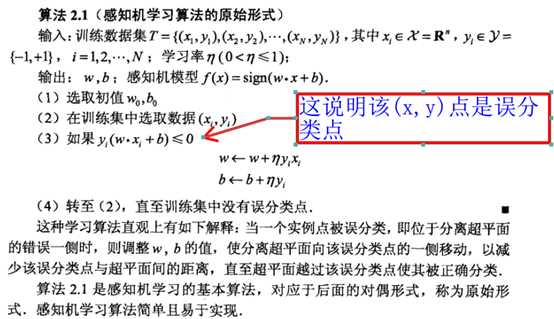感知器算法--python实现
Posted
tags:
篇首语:本文由小常识网(cha138.com)小编为大家整理,主要介绍了感知器算法--python实现相关的知识,希望对你有一定的参考价值。
写在前面:
参考:
1 《统计学习方法》第二章感知机【感知机的概念、误分类的判断】 http://pan.baidu.com/s/1hrTscza
2 点到面的距离
3 梯度下降
4 NumPy-快速处理数据 属性shape:表示几行几列; dot(a,b) 计算数组、矩阵的乘积

感知器算法:

Python实现:
#coding:utf-8
import numpy as np
class Perceptron(object):
def __init__(self):
self.study_step = 1 #学习步长即学习率
self.study_total = 11 #学习次数即训练次数
self.w_total = 1 #w更新次数
#对数据集进行训练
def train(self, T):
w = np.zeros(T.shape[1]-1) # 初始化权重向量为0 [权重都从0开始]
b = 0 # 初始化阈值为0
print ‘ W X W B‘
#训练study_total次
for study in range(self.study_total):
w_before = w #训练前的w值
b_before = b #训练前的b值
#训练
for t in range(T.shape[0]):
# 计算实际的y值,其期望值为T[0][2]
X = T[t][0:T.shape[1]-1] #X的值
Y = T[t][T.shape[1]-1] #期望值
distin = Y*self.input_X(X, w, b)
#判断X是否是误分类点
if distin <= 0:
w = w + self.study_step*Y*X
b = b + self.study_step*Y
print ‘w‘,self.w_total,‘: x‘,t+1,w[0:w.shape[0]], ‘ ‘, b
self.w_total = self.w_total + 1
#经过训练后w、b都不在变化,说明训练集中已没有误分类点,那么跳出循环
if w_before is w and b_before == b:
print ‘训练后,得到w、b:‘, w[0:w.shape[0]], ‘ ‘, b
break
return w,b
#得出w*x+b的值
def input_X(self, X, w, b):
return np.dot(X,w) + b #wwww**
#由X去预测Y值
def prediction(self, X, w, b):
Y = self.input_X(X, w, b)
return np.where(Y >= 0, 1, -1)
if __name__ == ‘__main__‘:
per = Perceptron()
#训练数据集,x1=(3,3),x2=(4,3),x3=(1,1), 对应于y1=1,y2=1,y3=-1
T = np.array([[3,3,1],[4,3,1],[1,1,-1]]) #进行训练的数据集
w,b = per.train(T) #经过训练得到w\\b
X = np.array([3, 3]) # 对X进行预测
Y = per.prediction(X,w,b) #得到X的预测值
print ‘X预测得到Y:‘,Y


以上是关于感知器算法--python实现的主要内容,如果未能解决你的问题,请参考以下文章